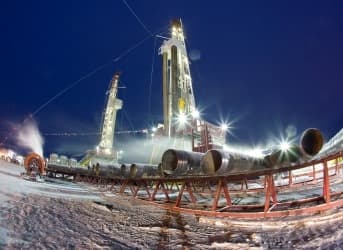Although serious obstacles remain, China is finally making progress on tapping its vast shale gas reserves, which hold the promise of a new source of clean energy for the coal smoke-choked country.
According to the U.S. Energy Information Administration, China holds the world’s largest reserves of technically recoverable shale gas in the world, 1,115 trillion cubic feet. That’s about 68 percent more than what the U.S. holds.
But it has thus far been unable to unlock those reserves for a couple of reasons. First, it has taken time for Chinese oil and gas companies to acquire shale drilling expertise. And second, China’s shale is geologically different than what’s found in the U.S., which means China can’t easily use existing technology.
Despite this, a new report from Bloomberg New Energy Finance finds that China may actually hit its 2015 shale gas production target, which the central government has mandated. Researchers analyzed the results of well data from the Fuling block in the Sichuan Basin, state-owned firm Sinopec is making substantial progress, and the national target of 6.5 billion cubic meters per year (480 million cubic feet per day) by 2015 could be within reach.
Hitting that goal would be a boon for a country that is desperate to find sources of energy other than coal, which is causing crisis-level air pollution. Earlier this year, China declared a “war on pollution” in an effort to cut back on the suffocating smog in many of its major cities. By 2017, China is aiming to lift natural gas consumption to 9 percent of total energy demand, up from 5.2 percent in 2013. China has already made some progress on that front, as natural gas only made up 4 percent of energy demand just two years ago (see chart).

To be sure, China’s shale gas industry is still in its infancy. Although Sinopec has been able to boost production, it has come at a high cost. The average cost to drill a Chinese shale well this year is around $11 to $13 million. That far exceeds U.S. figures: $9.3 million per well in the Haynesville, $6 million in the Marcellus, $3.3 million in the Barnett, and $2.6 million in the Fayetteville shale.
Related Article: Australia’s Shale Gas Sector Set to Take Off
On the brighter side, China has brought down costs as it gains experience. So while the current cost of drilling each well is still high, it’s down from the $16 million average in 2012. Drillers are aiming to further slash costs to $10 million per well for 2014. And as the industry scales up and gains more experience, costs should decline further.
Coming on the heels of a massive $400 billion natural gas deal with Russia, news that China may be making serious progress in shale development suggests that China could be at a turning point. China has long been a voracious consumer of all commodities – except, notably, natural gas – so it could be on the verge of charting a future path that relies very heavily on natural gas.
And developing shale gas into a serious source of supply would give it greater leverage over LNG pricing. The deal with Russia will secure natural gas at a price of around $10 per million Btu (MMBtu) – although exact figures have been kept a secret. That alone could make LNG pricing more competitive in Asia, bringing prices down from the highs of $16 to $18/MMBtu seen in the last few years. But if China can also develop shale gas in a meaningful way, it will have much greater influence at the bargaining table over LNG supplies.
That is what China is hoping for anyway, but very large obstacles stand in the way. Lack of infrastructure, distorted pricing, and water scarcity are just a few of the enormous challenges holding back the Chinese shale industry. But the Chinese government and its state-owned exploration companies are determined to turn it into a reality.
By Nick Cunningham of Oilprice.com


















